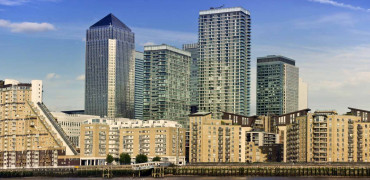In March 2020 the UK government introduced its new consultation on: A Performance-based Policy Framework in large Commercial and Industrial Buildings.
It’s not the catchiest title, but the proposals in the document should make designers, contractors and installers sit up and take notice.
The focus of the document is on ‘very large’ buildings over 1,000m2. They use around 53% of the total energy in non-domestic buildings.
As the report states: “There are a relatively small number of large buildings which use a lot of energy and emit a lot of carbon.”
The need to consider building services as a ‘system’ is becoming more important than ever
Official advice on reducing energy
The government’s aim therefore is to introduce a rating scheme that addresses this problem by highlighting exactly how and why large buildings are using energy – and to reduce it wherever possible.
One example is the Australian NABERS scheme which has been very successful in reducing energy use in commercial buildings. It has also overcome the old challenge of encouraging landlords and tenants to share responsibility for operational energy efficiency.
And that is not the only legislation that’s pushing for better energy and carbon performance in buildings – we are also anticipating the launch this year of the Future Buildings Standard as well as an updated Part L. Both are expected to set higher standards on carbon emissions.
Nothing in isolation
With these drivers in mind, the need to consider building services as a ‘system’ is becoming more important than ever.
Rather than viewing each element of heating, ventilating and cooling as separate, there are significant benefits to be gained from thinking holistically – in terms of energy saving, operational cost reduction and cutting carbon emissions.
HVAC design and installation can often suffer because different elements are treated as separate from one another. It’s understandable, as there is now so much specialist knowledge required to get complicated projects over the finish line effectively and efficiently.
However, as we attempt to create buildings that are as energy efficient as possible, we need to be able to consider how to apply the latest low-carbon technologies and techniques where they will have the most impact. CIBSE’s Guide L: 2020 report, states that this challenge: “Forces us to apply whole-system thinking and seek strategies that offer multiple benefits”.
Harnessing energy
There are many examples of how system thinking can harness energies from around a building that might otherwise be wasted.
Heat recovery is a case in point. This can also be done in ventilation systems.
For example, the Mitsubishi Electric Lossnay mechanical ventilation with heat recovery unit supplies fresh air into a building, using heat from extracted stale air to reduce the amount of energy required for pre-heating.
And a heat recovery water source heat pump can be used alongside a chiller.
The heat pump uses the condenser water or return chiller water as its energy source.
This improves the performance of large capacity chillers and dedicated plant often found in office projects, and greatly enhances overall energy performance of the building’s heating and cooling.
Pushing the boundaries on carbon reduction
At Mitsubishi Electric, we like to think that we can help with this type of system thinking.
Our range of products and experience in every type of project mean that we can bring a lot of expertise to HVAC design and delivery – helping to highlight where technologies can be used to really push the boundaries on energy use and carbon reduction.
For contractors there are also benefits to working with a single supplier. The more complex the project, the more valuable a single point of contact for all HVAC equipment becomes.
This applies to practicalities such as delivery of products, and to the advice that can be offered to ensure the equipment is installed so that the whole system operates smoothly from day one.
Mitsubishi Electric can help with HVAC projects – from heating and cooling to renewables such as heat pumps, heat pump chillers and hybrid VRF.
Our expert team can ensure the contractor’s job is straightforward and trouble-free no matter how complex the demands of the project.
James Harwood is a Business Development Manager



